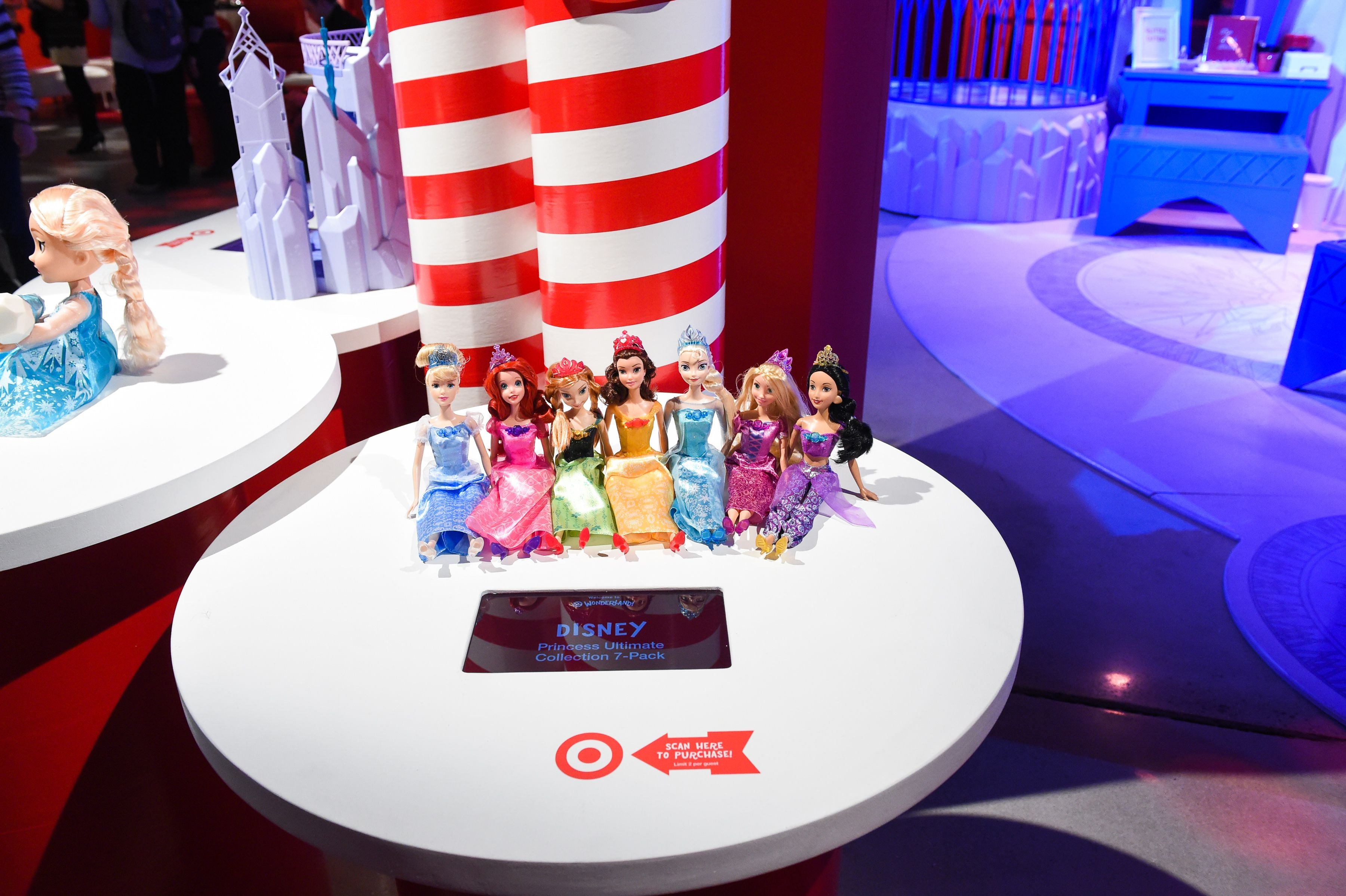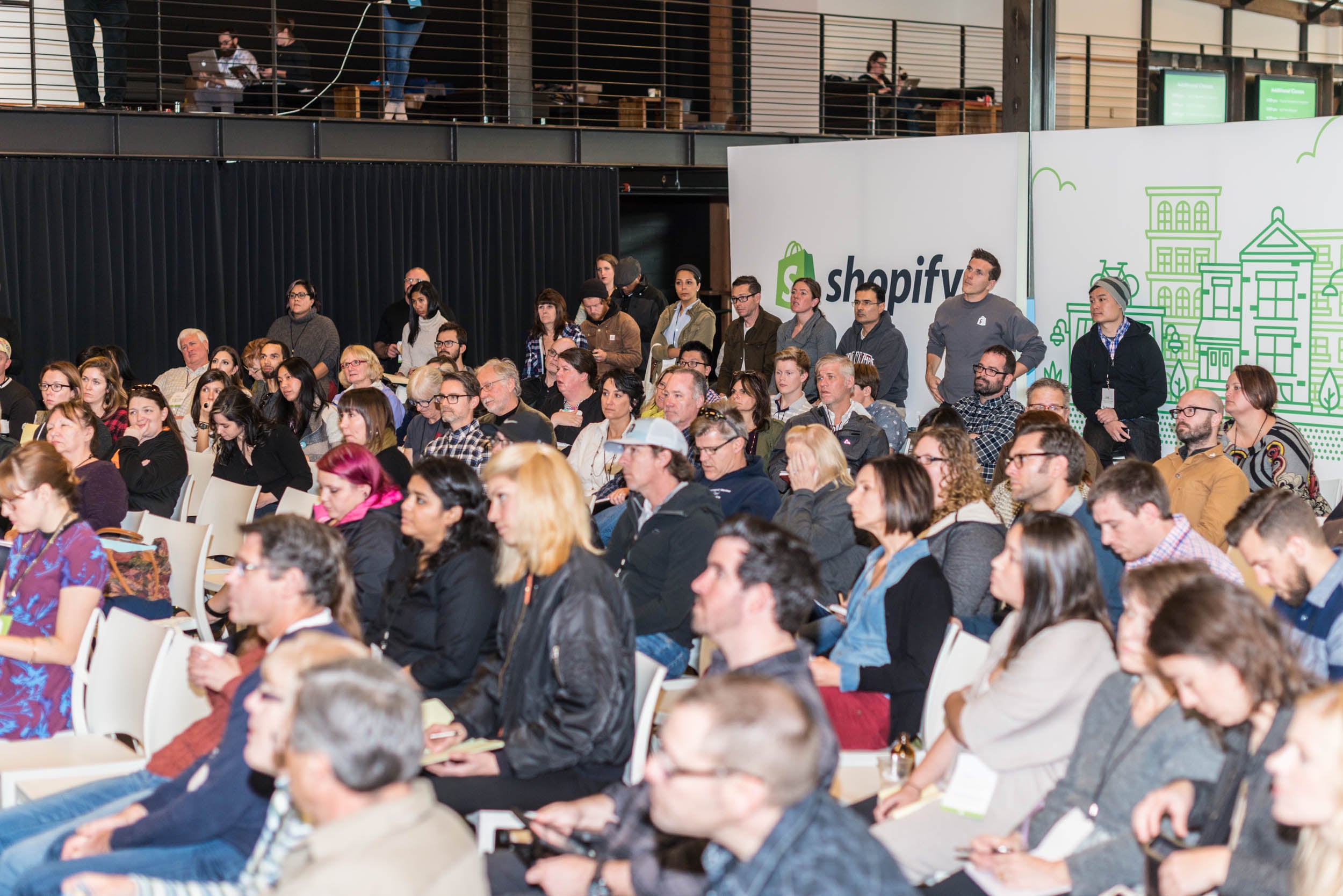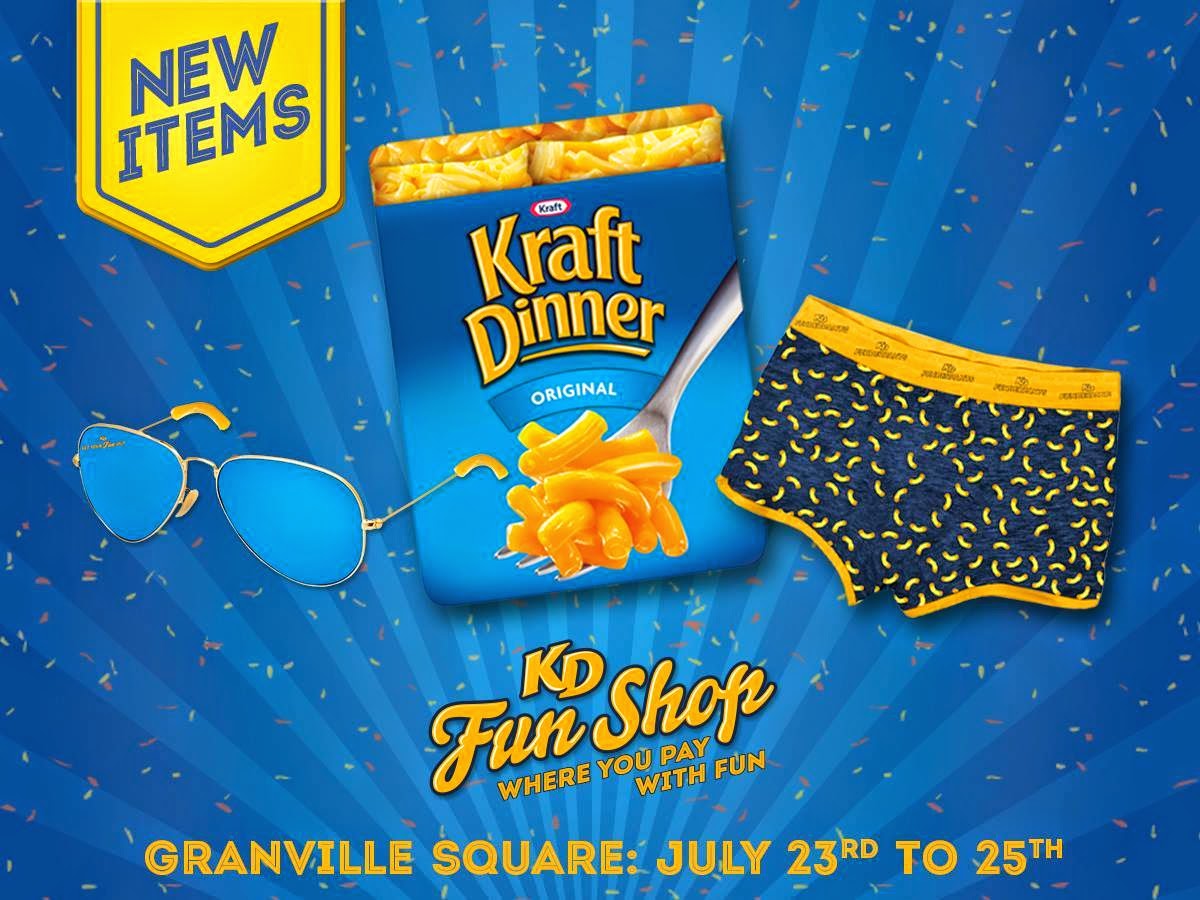“True loyalty exists when customers feel safe, appreciated and smart,” says Julie Wittes Schlack and Ed Chao, co-authors of Head vs. Heart. “Emotions drive behavior; loyalty is generated when a brand makes a customer feel a certain way.”
In a world where 89% of brands plan to compete by customer experience, neither the “online only” or traditional big box “brick and mortar” approaches are the most efficient for make a lasting impression.“Intimacy” doesn’t scale in large department store settings, and you can't see someone smile online.
Instead, pop-up shops are growing in popularity as a hybrid model to build more intimate relationships while creating unique, memorable 3D experiences that are aligned with the brand's values.
Image via Pixabay
According to PopUp Republic,“the pop-up industry has grown to approximately $10 billion in sales.”
Because of its growing popularity, customers are learning to expect a unique experience that is different than what they get when they visit a brick and mortar store.

Image via Fortune.com
Take for example “Target Wonderland,” where customers were given a glimpse into the future of holiday shopping – testing out new technologies like RFID (scanning a product on your mobile phone to make an immediate secure payment) that could enhance their in-store shopping experience and you can see where this is all headed.
Also consider that last month, Walmart announced the closing of 269 retail stores to remain nimble and competitive (with sites like Amazon) in a price conscious market, and to focus more heavily on its “ecommerce business and pick-up services for shoppers.” Other retailers, like GAP Inc. and American Eagle Outfitters have recently made similar strategic decisions.
When it comes to making customers feel like you understand their needs and appreciate them, nothing beats intimate, face-to-face interactions.
1. Build Brand Loyalty Faster With a Killer Customer Experience
“Think of your brand like a debutante at a coming out ball,” says Gentry Lane in this Storefront blog post. Lane explains that “pop-up shops are a formal introduction of your brand to you customer, so it’s important to make a more meaningful statement than “Welcome! Here are some products on a shelf.”Instead, Lane suggests using the opportunity as a way to evoke new customer feelings and give them a glimpse into the lifestyle you're a part of.
For example, SC Johnson Glade (maker of Glade Plugin air fresheners) created a pop-up experience in New York City focused on “selling feelings” to customers. Visitors were able to “lounge in one of five interactive areas that are designed to embody feelings associated with Glade scents,” explains Natalie Tadena in this WSJ.com article
Melissa Gonzalez, founder of the Lion’esque Group, a brand and pop-up specialty firm, warns that you need to provide a unique hook to get people into your pop-up store. And she explains that “brands will have to continue to evolve the hook in what they create in the space, so it doesn’t become cliché.”
Likewise, this KDM Pop Solutions Group blog suggests that “shoppers buy into the sense of urgency you provoke: ‘you can’t miss this’ and ‘limited time only,’ in addition to exclusive offers are a big attraction.”
For example, a recent PopUp Republic poll revealed that shoppers will expect the following:
- 61% want to find seasonal products
- 39% seek unique services or products
- 36% expect a local product assortment
- 34% come for great prices
- 33% attend out of convenience
- 30% are looking for a fun and unique experience
2. Get Quick, Qualitative Product Feedback on the Spot
Think of a pop-up shop as a marketing tool – like a product taste test – where you and your customers are mutually sharing information and learning from each other through the space.When Shopify setup its very own pop-up Retail Tour across the U.S. last year, the goal was to provide a temporary space where customers could attend workshops and gain invaluable knowledge about running an ecommerce store – for free.
 To create a unique customer experience, Catherine Chiong, Event Producer at Shopify says “the team tailored content for both ecommerce beginners and experienced store owners – to offer everyone a reason to attend their pop-up shop events.”
To create a unique customer experience, Catherine Chiong, Event Producer at Shopify says “the team tailored content for both ecommerce beginners and experienced store owners – to offer everyone a reason to attend their pop-up shop events.”A by-product of that unique customer experience was an opportunity for Shopify product gurus to gather on-the-spot feedback about the point of sale (POS) products they were demoing in-person. Verbal feedback was then taken to the development team for immediate improvements.

According to the Storefront.com blog, the key metrics you can use to gain fast and practical knowledge about your target customers and their feelings about your product(s) or service(s) are:
a) Product Feedback Through Consumer Behaviors
While asking customers to fill out a survey about your products may provide some valuable feedback, Storefront suggests that
“more often, it’s important to know why a product isn’t selling, rather than what’s right or wrong about the SKU that did sell…the only way to find out why red is outselling blue is to be on the sales floor [via your pop-up store] with a trained-to-analyze sales staff as your extra eyes and ears on the ground.”
It’s also important to encourage customers to speak freely about what isn’t working. The quicker you find the reason, the faster you can resolve the issue and improve your sales process or product.
b) Regional Demographics and Psychographics
Relying on your in-store retailers’ sales data after you launch a new product gives you very little insight “on external contributing factors (e.g. foot traffic, weather, etc.), no access to consumer engagement, and limited information on the sales that do happen.”
Launching pop-up shops in key target regions will give you way more intel, as you’ll gain a holistic perspective – directly from your local customers’ and sales staffs’ personal accounts.
For example, Shopify customer Rhone recently opened up its first pop-up shop in New York City to learn more about its key target demographic: the sophisticated, high income active man.
Rhone sales associates were able to gain real-time feedback from a long-time customer on a new product line they had been developing (a new pair of shorts) which they immediately tweaked to include a liner.
According to the company, the shorts quickly became a best-selling item on its website.
Examples from Leading Brands
1. Pureplay Ecommerce Pop-up Shops: Frank & Oak
While Montreal-based fashion ecommerce startup Frank & Oak is a pure play ecommerce business, the millennial men’s fashion brand has been experimenting with pop-up shops for years to help introduce new customers to the brand and to test launch new product lines with its customer base. From in-store baristas, to barbers and personal stylists on-site, the Canadian tour attracted so much buzz that the brand knew they had to take the pop-up experience to the U.S.
So, last year, the company tried something new by launching a customer loyalty contest in the U.S. where “fans” of the brand could vote to get a pop-up shop to visit their city by purchasing gift cards and sharing with their friends via social media over a two-week time period. Check out the promo video below:
The Frank & Oak pop-up shop experiences and reception from U.S. consumers has been so successful that the company plans to open up brick and mortar stores in the U.S. very soon.
2. Store Bought Brands: Levi’s and Kraft Dinner
i. Levi’s Commuter Collection Pop-Up Stores & Workspaces
 Image via Knog
Image via Knog
After launching its bike commuter fashion line 3 years ago, Levi’s has set-up a series of mobile pop-up shops across the U.S. to attract and connect with its target demographic (cyclists) face-to-face in the primary target regions.
Levi’s offered a number of attractive services at the pop-up shops to draw people in including bike tuning, bike washing and custom tailoring of its commuter clothing which was on display.
The success of the mobile pop-up shops inspired Levi’s to try a new format this past summer. The company opened up “bike commuter hubs” in three target cities: New York, London and Los Angeles.
These centers offered temporary co-working spaces for the modern commuter – providing everything from “free wifi and coffee, plus instructional workshops and bike repair services.”
ii. Kraft Dinner “KD Fun Shops”
 Image via StrategyOnline.ca
Image via StrategyOnline.ca
According to a recent Kraft Dinner “Fun Index” survey “at any given time, only one in five Canadians is having fun.” So, to encourage more Canadians to “embrace the fun in their lives” by eating more KD, Kraft set-up 3-day “fun shops” in Toronto, Montreal and Vancouver in what they considered to be “unfun” locations, such as transit stops and local dry cleaners.
To get people to participate in a fun challenge, Marketing Magazine explains that KD offered to pay for peoples’ transit rides or to give them prizes like “KD funderpants” in exchange for juggling a box of KD, or rapping about KD on the spot.
All of these fun experiences were of course captured and shared via social media to help the brand spread its message about how KD makes your life more fun.
Measuring Success

Image via Pixabay
There are many ways to determine the success or failure of your initiative – beyond the sale of any products you may have featured in your pop-up store. Here are a few to consider:
1. Customer Acquisition and Interactions
Capturing a customer’s email address is an important way to build a long-standing relationship with them after they visit your pop-up store. But people won’t just walk into your pop-up store and give you their email address or personal information.
Offering unique customer services like personal stylists, instructional workshops, fun experiences (like getting a manicure or your makeup done) or new product demonstrations and trials are great incentives to offer in exchange for their contact info.
What’s more, people walk away with a memorable and shareable brand experience that is often hard to scale via a website or traditional brick and mortar store.
A list of email addresses is also an excellent way to not only evaluate how well your sales associate did interacting with customers and convincing people to sign-up, but also to look at retention of new customers over time (e.g. did they continue to shop six months after they signed up?).
2. Attendance and Frequency of Visits
During the Shopify pop-up retail tour, event planners evaluated how many people checked-in at the event, versus the number of individuals who signed up online.
They also looked at how many people came back to the event over the course of the week they were in town.
“We found that some Shopify Retail Tour attendees came back every day – even though the content was the same,” says Catherine Chiong, event producer at Shopify. “What they wanted was an opportunity to network with other store owners and get to know Shopify employees better” and put a face to the products they use every day.
She says that by the end of some of the local events, frequent visitors were hugging the Shopify employees goodbye and thanking them for coming to their city.
3. Social Media Mentions and Reach (Digital Word of Mouth)
Monitor your event (during and after) via a hashtag and related keywords on Instagram and Twitter along with other social media channels to understand how customers respond to your unique pop-up store experience.
Whether the content is positive or not, you can learn a lot from that information often in real-time – which can help you adjust, and improve for next time, or to learn about how to enhance your customer experiences going forward.
4. Discount Code and Coupon Redemptions
According to RetailTouchpoints, M&M’s sent out a street team in NYC to give out coupons to be redeemed in-store at its M&M’s World pop-up shop last fall. Instagram followers of the brand were given a special offer that could be redeemed at checkout.
The M&M’s marketing team was then able to look at how many people redeemed the codes to see how well they were able to drive awareness of the brand and sales within the pop-up shop.
It’s not 100% accurate. But it is still a good indicator of interest in your brand.
Here are some additional ways you can evaluate the success of your pop-up shop. Just remember that even if your initiative didn’t turn out exactly how you wanted, or didn’t meet all of your goals and expectations, there are valuable lessons that you can take away from a program – to either bring back to your team or to improve upon for the next time you run a pop-up shop.
For best practices on how to effectively run a pop-up shop, check out this handy guide. And for more ideas on how to enhance your online customer experience, read this post by Tommy Walker on the Shopify blog.
Have additional questions about pop-up shop best practices or improving your customer experience? Please share in the comments below.
 About The Author
About The Author
Andrea Wahbe is a freelance B2B marketing strategist and corporate storyteller who writes about Canadian SMEs, marketing, and digital media trends. Follow her on Twitter.
Read more
- Consumer Psychology: Sell to the Person Behind the Persona
- The Death of Advertising as We Know It
- How You Can Profit from Personalizing Content on Your Ecommerce Store
- The 1 Rule for Building a Billion-Dollar Business
- 3 DTC Brands on How They Build Customer Loyalty
- Reimagining Racial Equity in the Fashion Industry
- How Beard & Blade Doubled Its Wholesale Ecommerce a Year after Replatforming from Magento
- Shopify vs. Magento 2023 — Which Platform Is Best for You?
- Shopify vs. Bigcommerce — Which Is the Better Ecommerce Platform in 2023?
- Shopify vs. Salesforce Commerce Cloud


